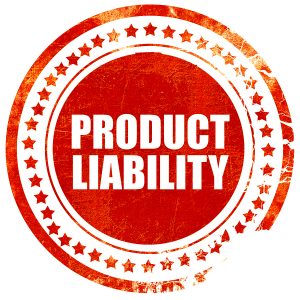Make Your Defective Product Liability Lawsuit Stronger
 Michael Babboni
Recalls
Have you ever looked forward to using your new purchases only to find out that they do not work? The disappointment can easily get to you but be careful about doing anything rash. When your defective product did not work as intended and caused you harm, you can file a product liability lawsuit and demand compensation for the damages.
Michael Babboni
Recalls
Have you ever looked forward to using your new purchases only to find out that they do not work? The disappointment can easily get to you but be careful about doing anything rash. When your defective product did not work as intended and caused you harm, you can file a product liability lawsuit and demand compensation for the damages.Here are 5 things you should do to make your product liability lawsuit stronger.
• Document What Happened - There are many possible outcomes after using a defective item like burns, skin reactions, injuries, and property damage. Before moving to clean up the mess, do not forget to document the aftermath. You could take photos or videos of what happened immediately after. It would also be helpful if you get witness accounts if somebody else is present when the incident happened.
• Do Not Throw The Product Away - No matter how much the product looks damaged, it is an important piece of evidence that will show the defects. For instance, the instructions written on the packaging may be wrong, misleading, or non-existent. Missing or uneven parts are also easier to prove when the product is presented as it is. Put it away for safekeeping as long as it does not pose any more threats, and try to keep it as it is.
• Collect Other Documents - Receipts, warranties, and instruction manuals are just some of the documents that you should have. These can prove that the product was purchased recently and that its defects are not from being used and abused for months or years. Other documents you could also prepare are medical treatment records for the injuries you sustained after using the defective item.
• Contact An Experienced Attorney - It is challenging to go against product manufacturers that would refuse to back down and accept that their product was defective. Having a lawyer to help you in your case would increase your chances of winning the lawsuit. Your lawyer could also guide you on the next steps to take and handle negotiations.
• Identify What Type Of Product Defect You Are Dealing With - There are different kinds of product defects and knowing what kind you’re facing can help you establish your case and defend your position. The three types of defects are product design, manufacturing defects, and insufficient warnings and instructions.
• Product Design Defect - Most of the time, people buy products because they look good. However, they would, later on, find out that the design was faulty and made the product unusable, if not outright dangerous. Problems with poor design are considered product design defects.
• Manufacturing Defect - Problems can occur during the manufacturing process but are no longer noticed or seen as products are released for use and consumption. Examples of these are missing parts, uneven structure, and loose screws.
• Marketing Defects - Insufficient warnings, wrong instructions, and misleading marketing promotions all fall under marketing defects. This happens when the user failed to use the product properly because the instructions are hard to understand, lacking, or just wrong. One example of this is putting the age limit for toys incorrectly, especially for items that contain choking hazards.
